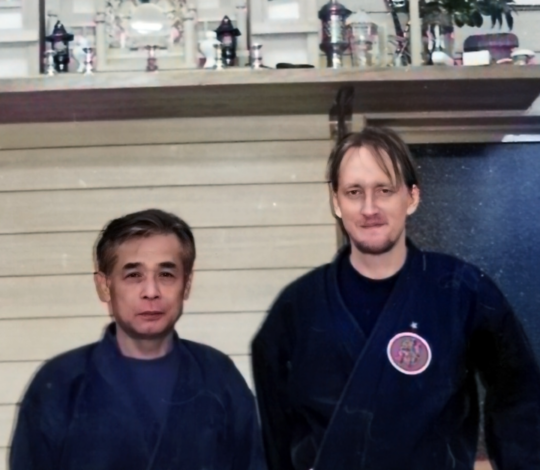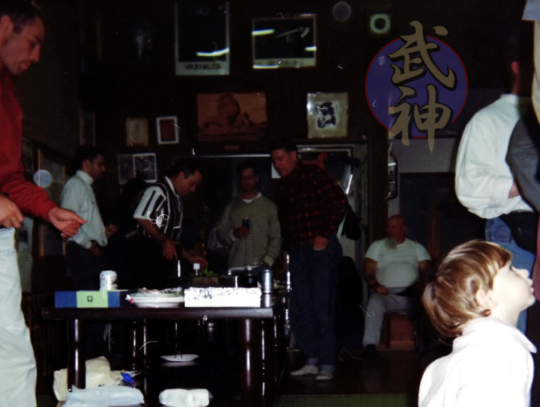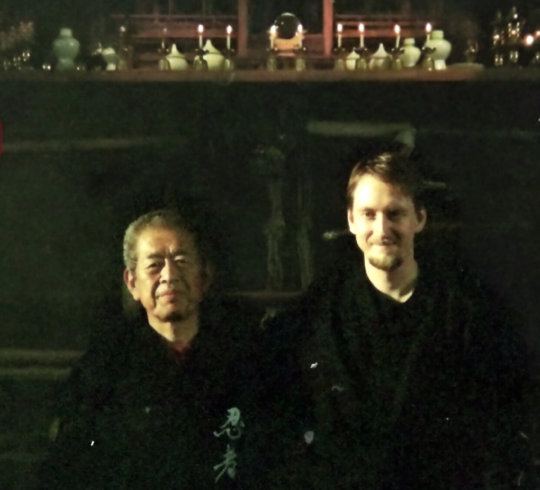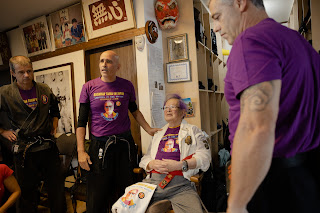Daikomyosai – December 1998: A Glimpse into the Bujinkan World
From 武神館兜龍 Bujinkan Toryu by Toryu
Introduction

In December 1998, I had the incredible opportunity to attend Daikomyosai, a martial arts event held in Japan. Daikomyosai, also known as Taikai, is an annual gathering of martial artists from around the world. This event is unique, primarily because it is presided over by Soke Dr. Masaaki Hatsumi, the head instructor of the Bujinkan organization. In this essay, I will provide insights into my experiences during Daikomyosai, the rigorous training sessions, and the diverse group of participants.
An International Gathering
Daikomyosai brought together a diverse group of martial artists, with around 90 participants, mostly gaijins (non-Japanese). Among the attendees were several judans (10th-degree black belts), including notable figures like Jack Hoban, Richard Van Donk, and Bill Atkins from the USA, Brin and Natascha Morgan from England, and Arnaud Cousergue from France. Japanese shihans (instructors) such as Shiraishi, Noguchi, Nagato, Oguri, Seno, and Nagase-sensei also joined the event. Representatives from countries like Sweden, Denmark, England, Germany, Canada, and Australia enriched the international mix. Despite the impressive turnout, there were still many notable absentees, both Japanese and Western shihans and shidoshis.
Intense Training Sessions

The training sessions at Daikomyosai were intense and highly rewarding. Each day consisted of four one-hour sessions, totaling a grueling three days of training. The sessions began with a judan demonstrating a fundamental technique a few times, allowing participants to practice for a brief period. Soke would then break down the technique, often highlighting essential details. The pace was rapid, with participants getting only a few attempts before moving on to the next detail or variation (henka). After each hour of training, there was a short 10-minute break before diving into the next fundamental technique.
Versatility in Techniques
Daikomyosai covered various techniques, including Nichigeki, Gekkan, Fubi, Uryu, Hibari, Setsuyaku, Musan, and Karai from Ten no kata, Riken, and Shinken from Chi no kata, as well as Kobushinagashi and Ryotegake from Shizenshigoku no kata. These techniques primarily belonged to the realm of Taijutsu, specifically Dakentaijutsu in Shindenfudo-ryu. They encompassed a wide range of techniques, including strikes, kicks, joint locks, throws, and counters. Training also included scenarios involving attacks and defenses against various weapons, often with multiple opponents. The emphasis was on utilizing available objects as weapons or distractions, even something as simple as a bundle of paper.
Adaptation and Awareness
One crucial lesson from Daikomyosai was the importance of adapting and staying aware of your surroundings. Whether armed or unarmed, the focus was on using your environment and any available objects to your advantage. It was essential to assess your opponent for hidden threats, not limited to weapons. For instance, Soke demonstrated the folly of attacking an opponent before ensuring it was safe, highlighting the need for risk assessment.
Happo Biken: The Bujinkan Way
Daikomyosai also introduced us to a concept known as Happo Biken, a high-level skill within the Bujinkan system. It encourages practitioners to showcase their knowledge and share insights, regardless of their rank. Shyness had no place, as everyone was encouraged to step forward and teach if they had something valuable to share. The spirit of learning and teaching pervaded the entire event.
Camaraderie and Celebration

Beyond the intense training, Daikomyosai offered moments of camaraderie and celebration. An informal gathering at the Honbu dojo was held to celebrate a significant milestone – Hatsumi Soke’s 67th birthday. Participants indulged in a feast of sushi, risotto, pizza, and sweets, accompanied by beer, sake, and wine in moderation. The celebration included a blend of birthday songs, Christmas carols, and Japanese karaoke hits. Jack Hoban served as the master of ceremonies and troubadour.
A Remarkable Sense of Community

Daikomyosai left a lasting impression, creating a sense of community like no other. The shared experiences and learning opportunities were truly extraordinary. It was a testament to the global reach and enduring legacy of Bujinkan martial arts.
In conclusion, my journey to Daikomyosai in December 1998 was a remarkable experience filled with intensive training, cultural exchange, and the celebration of a martial arts legend’s birthday. The lessons learned at Daikomyosai extended beyond martial techniques, emphasizing adaptability, awareness, and the spirit of sharing within the Bujinkan community.
The post Daikomyosai – December 1998: A Glimpse into the Bujinkan World appeared first on 武神館兜龍 Bujinkan Toryu.…













